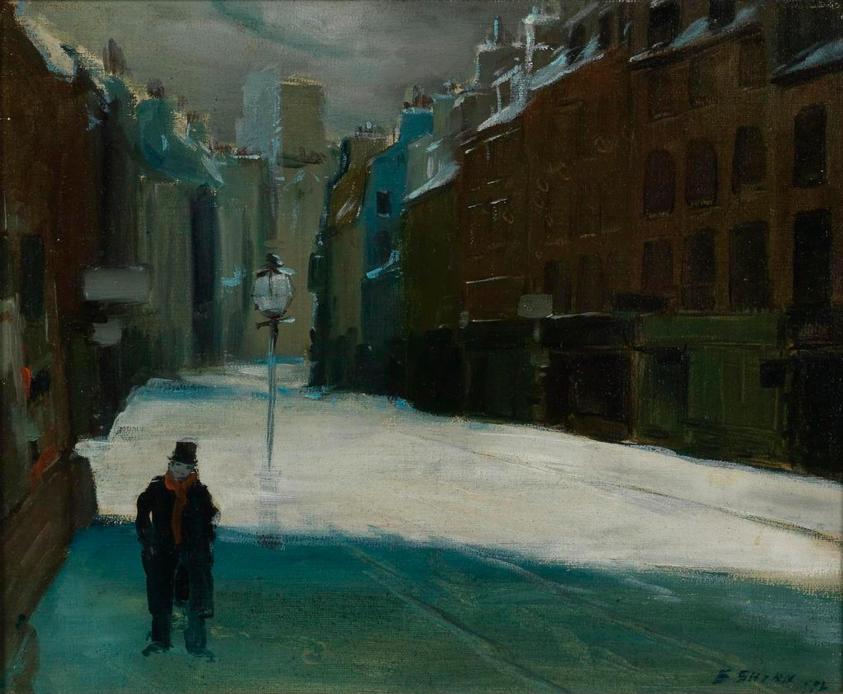
Artist:
Everett Shinn
(American, 1876 - 1953)
In the Latin Quarter
Medium: Oil on canvas
Date: ca. 1902
Dimensions:
17 1/4 × 15 1/4 in. (43.8 × 38.7 cm)
Accession number: 90.12.13
Label Copy:
Everett Shinn captures the wintery, ashen light of Paris as a solitary figure emerges from the narrow passage of a medieval street in the city’s Latin Quarter, a bohemian neighborhood along the left bank of the Seine. In the Latin Quarter resembles two other Parisian street scenes by Shinn (Private Collection and New Britain Museum of American Art) which date from 1902, shortly after his first trip to France.
Although trained at the Pennsylvania Academy of the Fine Arts, Shinn earned a living as an illustrator and staff artist for The Philadelphia Press and The New York World. Around the turn of the century, after gaining entrée to Harper’s Weekly, he began to transition to the world of fine art with a solo exhibition at Boussod-Valadon Galleries and inclusion in several prominent museum annuals. In Paris, Shinn recorded street scenes and images of everyday life just as he had done in New York; however, the Parisian scenes emphasize mood over the direct reportorial aspects of his previous work.
Everett Shinn captures the wintery, ashen light of Paris as a solitary figure emerges from the narrow passage of a medieval street in the city’s Latin Quarter, a bohemian neighborhood along the left bank of the Seine. In the Latin Quarter resembles two other Parisian street scenes by Shinn (Private Collection and New Britain Museum of American Art) which date from 1902, shortly after his first trip to France.
Although trained at the Pennsylvania Academy of the Fine Arts, Shinn earned a living as an illustrator and staff artist for The Philadelphia Press and The New York World. Around the turn of the century, after gaining entrée to Harper’s Weekly, he began to transition to the world of fine art with a solo exhibition at Boussod-Valadon Galleries and inclusion in several prominent museum annuals. In Paris, Shinn recorded street scenes and images of everyday life just as he had done in New York; however, the Parisian scenes emphasize mood over the direct reportorial aspects of his previous work.
Curatorial RemarksSIGNATURE; INSCRIPTIONS/MARKS